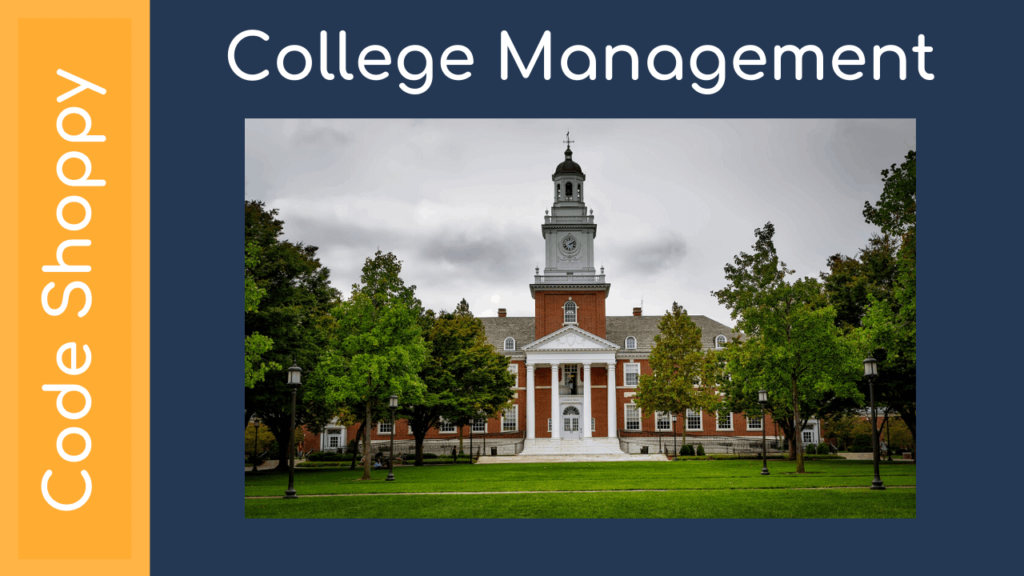College Management System Project
Opportunity and Challenge of College Management in the 3G Era
As the 3G communication technology gets mature day by day and the supporting infrastructure is being perfected, more and more 3G users in the campus bring both opportunity and challenge to the management work in colleges. This essay tries to analyze the characteristics of 3G technology and gives solutions to its ensuing problems.
The fast development and popularity of the internet influence people’s life style greatly. The appearance and application of 3G mobile phone drive the expansion of network from fixed networks to wireless networks. Everyone can have access to the internet no matter who they are, and where they are. Young people are more easily to accept new information and knowledge and they are the main users of 3G mobile phones. Therefore, the numbers of youth with 3G phones in hand will be bigger and bigger. On the one hand, the 3G platform can facilitate the promotion and publicity of principles and policies of our Party and provide the youths with more scientific knowledge. On the other hand, it also brings along with it severe challenges to the management work in the colleges. Educators can’t be passive resistance or simple suppression of the use of new media, and should actively employ this new technology, and use its advantages to carry out timely and effective education and management work to gain more dominance on the internet. College’s core function is to sever for the development of people and society. Serving the person’s development, is to manage students effectively and help them in their learning process, which contains student management, teaching management, and human resource management. Serving social development, is mainly the scientific research management. The management of colleges can be divided into four parts: student management, teaching management, human resources management and scientific research management [1]. “3G” which has the advantages of mobility, universality, and broadband can be easily integrated into UC (Unified Communications) and create digital campuses. How to accomplish Unified Communications? Unified Communications’ is to integrate all the existing communication methods to make communication possible by using any equipment and any network no matter where they are and what time it is [2]. The conventional ways of communication include telephone, fax, SMS, E-mail, web meetings, video conferences, voicemail, IM (Information Management) software, collaborative work platform, etc. These communication ways cover three fields, the traditional communication, IT and the Internet. Therefore, unified communications is the result of gradual development and integration of the three ways of communication, which will bring a breakthrough to the management work in colleges. Administration management: College leaders and teachers can also have instant access to school system to check information, communicate with teachers and hold tele-conference whenever they want through 3G phones when they are travelling on business. Daily communication across campus by telephone conference can be held at anytime, anywhere. OA (Office Automation) system can remind people of important business through text messages, sent messages to teachers or clients on special anniversary, Each departments can set up their own electronic address book to sent text messages simultaneously and call someone directly. Student management: Once students’ numbers changed, the school can update its address book directly. Teachers can categorize different student groups, and send directly SMS to different groups. UC system can keep synchronization with students’ phone, automatically judge students PC client state, and send SMS to offline users, ensuring the timely sending of information. This technology, “Gaoxiao Tong” (direct communication among colleges) has been applied extensively in many colleges and universities. Teaching management: Students will receive SMS for confirmation after selecting courses online successfully. They will also receive SMS from library before the books they have borrowed expire their date. BBS, digital library, educational administration system will be integrated in a unified system to realize single account, single-point login, and integral search. While UC on the one hand creates new digital campuses, they also give rich awards to the telecommunication operators. For instance, China Telecom is promoting “Yi Ji Tong” in campuses. It mainly includes two contents: firstly, the payment system, students can use mobile phone to pay their expenditures both in and out of campus. Everything can be done through one card. Secondly, the authentication system, includes attendance system, entrance guard system, and educational administration management system, which will improve the campus management efficiency [3]. Through these applications, we can realize a digital campus, minimize cost, enhance efficiency, teach scientifically, and ensure the safety of both capitals and personnel. “Yi Ji Tong” is a typical case in digitalizing campuses, and also a typical application that China Telecom lead IOT (Internet of Things) technology. Currently, China Telecom is planning “Wisdom Campus” based on “Yi Ji Tong” technologies to make more Chinese colleges participate in this innovation. We are going to promote 3G mobile Internet technology in campuses and society. Through the guidance of campuses to push forward the whole informatization process in China.
https://codeshoppy.com/shop/product/ijob-job-peers-training-and-exam/

